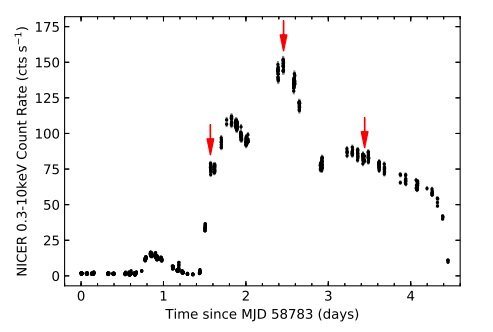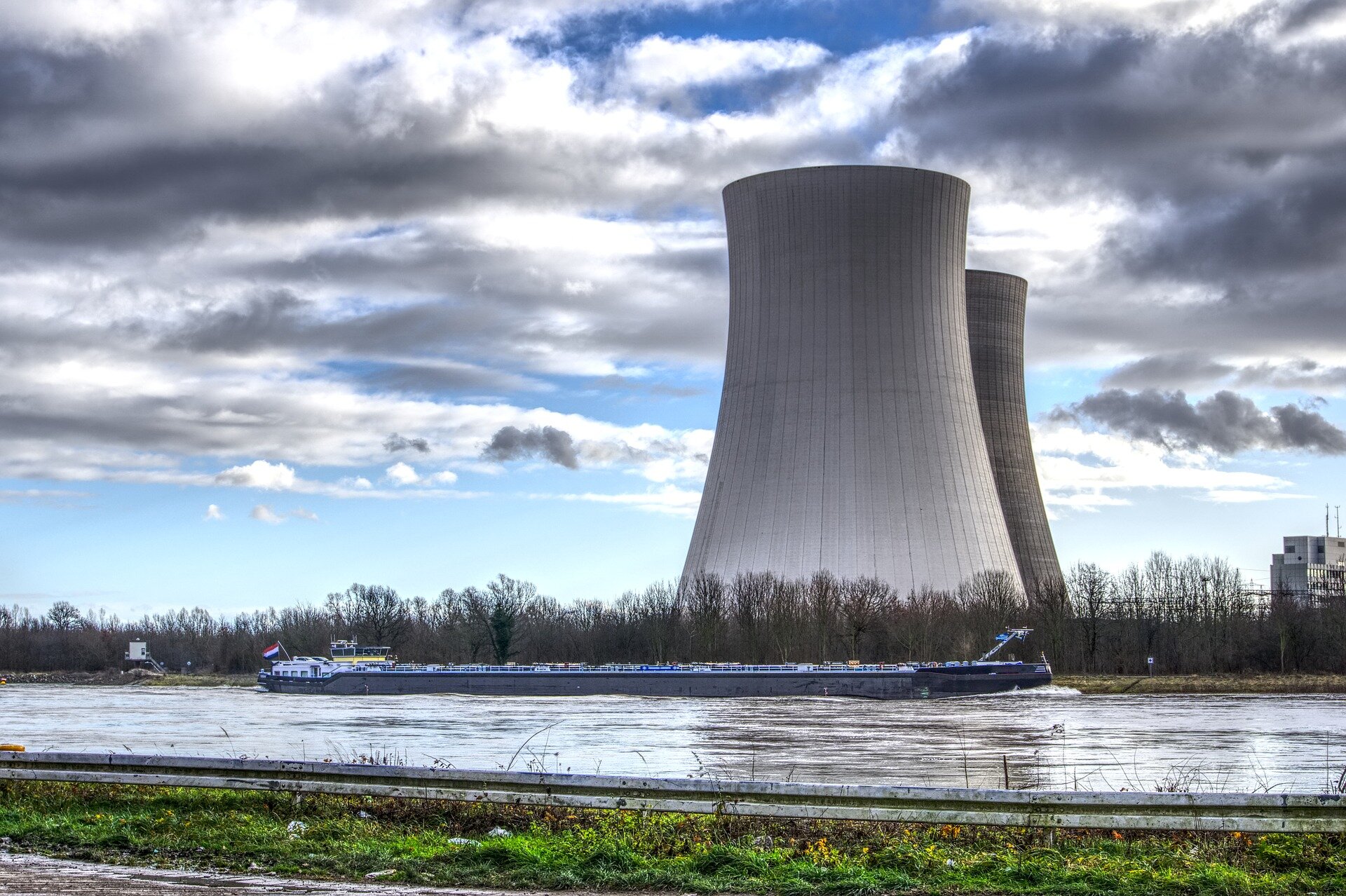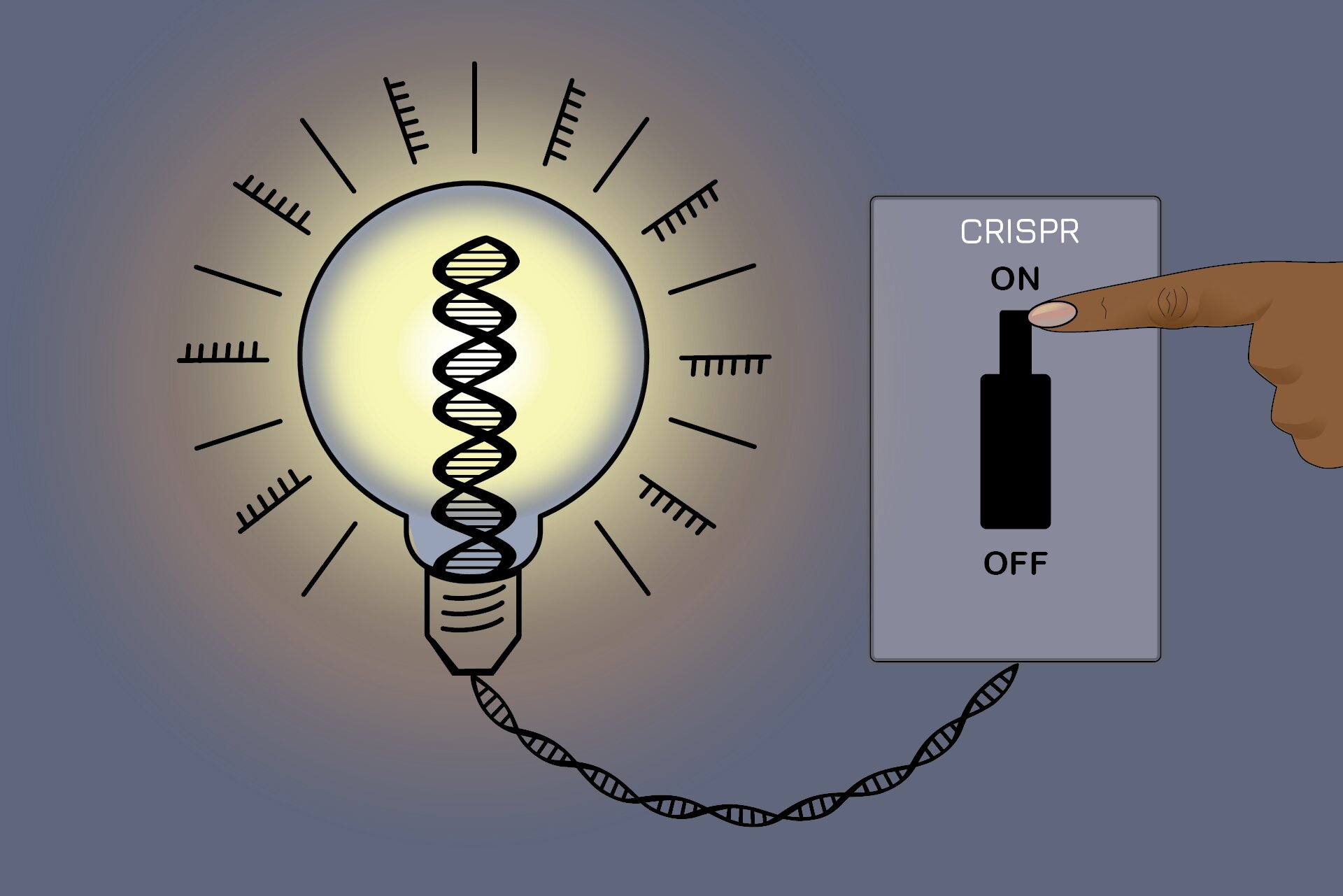#Thermonuclear type-I X-ray bursts detected from MAXI J1807+132

“#Thermonuclear type-I X-ray bursts detected from MAXI J1807+132”

An international team of astronomers has investigated an X-ray binary system known as MAXI J1807+132, using the NICER instrument aboard the International Space Station (ISS). They now report the detection of three thermonuclear type-I X-ray bursts from this source. The finding is reported in a paper published November 20 on arXiv.org.
X-ray binaries consist of a normal star or a white dwarf transferring mass onto a compact neutron star or a black hole. Based on the mass of the companion star, astronomers divide them into low-mass X-ray binaries (LMXB) and high-mass X-ray binaries (HMXB).
LMXBs may exhibit transient outbursts during which an increase in X-ray luminosities is observed. Some of these outbursts are characterized as type I X-ray bursts—thermonuclear explosions taking place on the surface layers of neutron stars.
MAXI J1807+132 is an X-ray binary that was detected during its 2017 outburst by the Monitor of All-sky X-ray Image Gas Slit Camera (MAXI/GSC) on ISS. In September 2019, another bursting activity period of this source started. Follow-up observations of MAXI J1807+132 suggested that it is an LMXB with a neutron star (NS) as a primary object.
Now, a new study published by a team of researchers led by Arianna C. Albayati of the University of Southampton, U.K., confirms the NS LMXB scenario for MAXI J1807+132. Using the Neutron star Interior Composition Explorer (NICER), they observed the system between September 16 and November 29, 2019, and identified three thermonuclear type-I X-ray bursts.
“NICER observed MAXI J1807 between 16 September and 26 November 2019, generating a total of 47 observation IDs (ObsIDs). We searched all available data for X-ray bursts; here, we report on the five observations around the time of the detection of three X-ray bursts,” the astronomers wrote in the paper.
The newly detected bursts were designated B1, B2 and B3. B2 took place approximately 21.3 hours after B1, while B3 occurred nearly 24 hours after B2. The hardness ratios of all the three bursts were observed to track similar profiles to the light curves, increasing through the burst rise and decreasing through the decay.
All three X-ray bursts have a rise time of about four seconds and exhibit long decay tails, lasting over one minute. The astronomers explained that such a slow rise and long decay suggests hydrogen-rich fuel at the moment of ignition, which is likely the result of accretion of a mixed hydrogen/helium fuel.
B1 is the brightest thermonuclear type I X-ray burst out of the three reported in the study. The observations found a pause in this burst, lasting approximately 1.6 seconds during the rise. Based on this finding and comparing it to results from other studies, the astronomers concluded that there is no link between the detection of double-peaked profiles and the detection of a pause during the rise.
AstroSat observations detect thermonuclear X-ray bursts on Cygnus X-2
Discovery of Thermonuclear Type-I X-ray Bursts from the X-ray binary MAXI J1807+132, arXiv:2011.10448 [astro-ph.HE] arxiv.org/abs/2011.10448
© 2020 Science X Network
Citation:
Thermonuclear type-I X-ray bursts detected from MAXI J1807+132 (2020, December 1)
retrieved 1 December 2020
from https://phys.org/news/2020-12-thermonuclear-type-i-x-ray-maxi-j1807132.html
This document is subject to copyright. Apart from any fair dealing for the purpose of private study or research, no
part may be reproduced without the written permission. The content is provided for information purposes only.
If you liked the article, do not forget to share it with your friends. Follow us on Google News too, click on the star and choose us from your favorites.
For forums sites go to Forum.BuradaBiliyorum.Com
If you want to read more Like this articles, you can visit our Science category.



